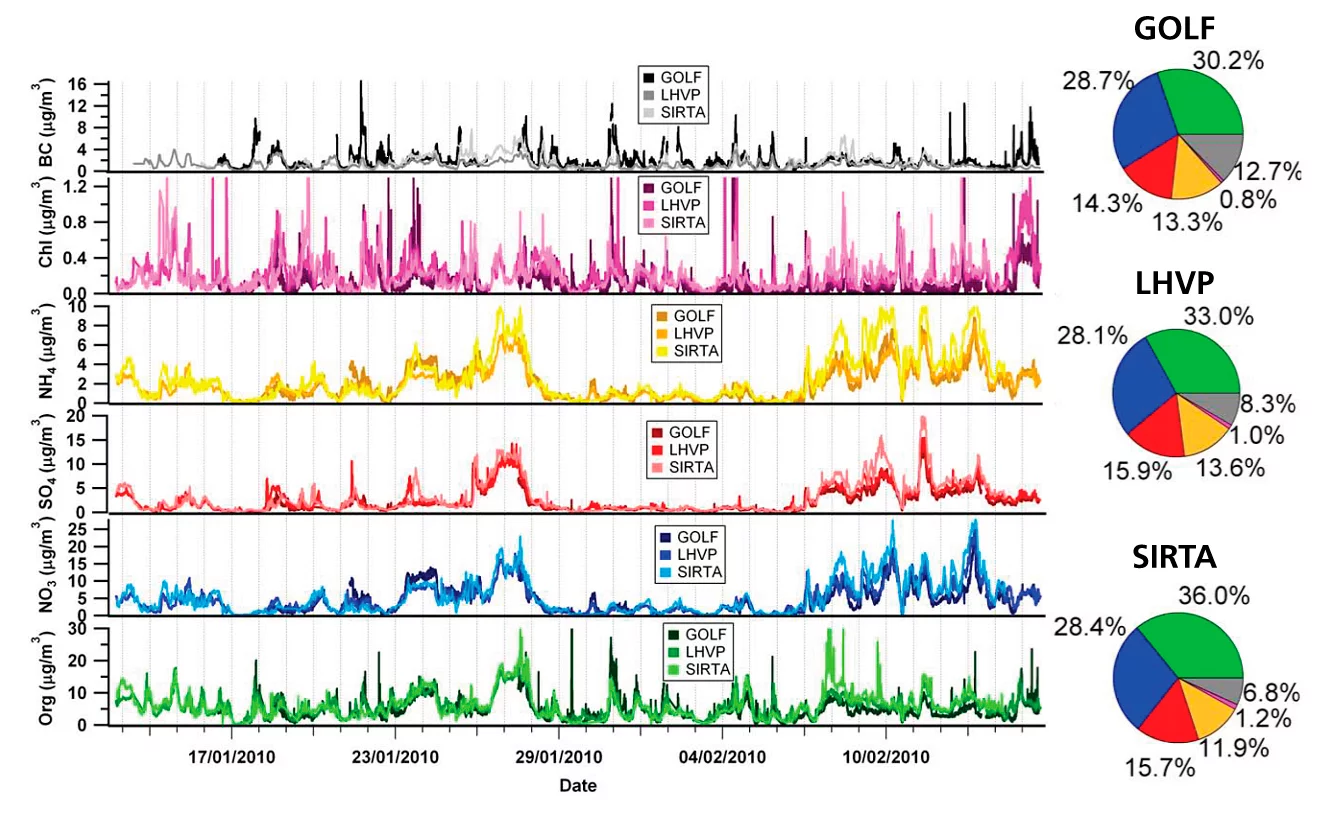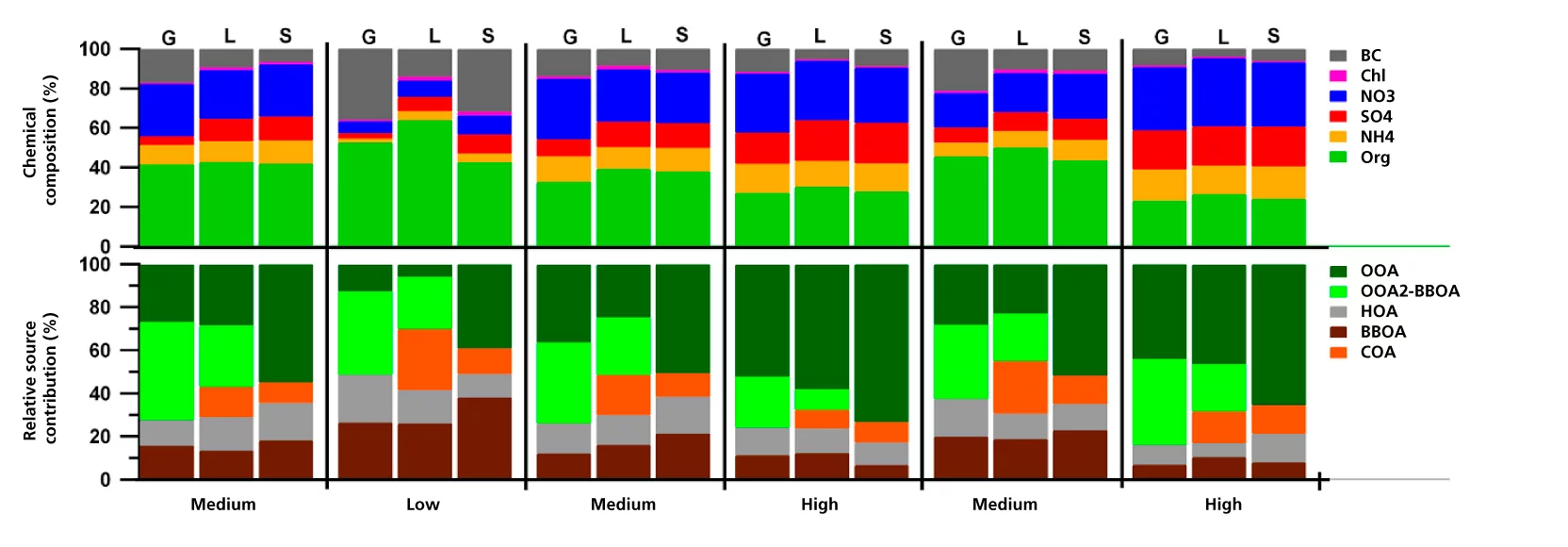Megacities are often perceived by the public to be major sources of air pollution, which affect their surroundings as well. However, recent studies show that the environmental credentials of cities with over one million inhabitants are not so bad after all. An international team of researchers, including scientists from the Paul Scherrer Institute (PSI), has now confirmed, on the basis of aerosol measurements carried out in Paris, that so-called post-industrial cities affect the air quality of their immediate surroundings far less than might be thought.
An intensive month-long programme of aerosol measurements, conducted between mid-January and mid-February 2010, has demonstrated that Paris affects the quality of the air in its immediate surroundings far less than might be imagined. The researchers took measurements of small aerosol particles with a radius of up to 1 micrometre at three measuring stations: one in the city centre and a further two on the outskirts (one 20 kilometres south-west and the other 20 kilometres north-east of the city centre). The aerosol pollution was very similar at all three sites in terms of concentration, chemical composition and timing. It can therefore be initially concluded that the air inhaled by Paris city dwellers –so long as they don’t live next to a high traffic street¬– is no worse than that inhaled by the inhabitants of the suburbs. But is it possible that this similarity in terms of air quality simply shows that the city is having an overriding influence on the suburbs? This is not the case according to researchers. Instead, both the city centre and the outskirts are dominated by supraregional factors: the air masses blown in from far away carry far more aerosols into the city than Paris can produce itself, thus smoothing out any differences within the Paris metropolitan area.
“Remote controlled” air quality
The scientists were able to demonstrate that Paris city centre is not an “aerosol centrifuge” by means of a simple test. They monitored the aerosol concentration at a measuring station on the outskirts of the city when the wind was blowing from the city centre. However, this had little effect on the aerosol pollution measured. Another comparison showed that aerosols originating from Central Europe contributed more to the local balance than those from the neighbouring centre of Paris. And a series of measurements carried out using a mobile laboratory at a location almost 60 kilometres from the city centre did not discover any major differences compared with the centre of Paris.
Focus on organic aerosols
The researchers then examined mainly organic aerosols. These are subdivided into primary organic aerosols, which can be emitted in particulate form directly into the atmosphere, for example by human activities such as traffic or biomass burning, and secondary organic aerosols which are formed in the atmosphere by chemical reactions of gases. The secondary organic aerosols (SOA), in particular, represent a real puzzle for atmospheric scientists since they are extremely complex in terms of their chemical composition and formation mechanism. Organic aerosols account for approximately one-third (30 to 36 per cent) of the total mass of aerosols in the Parisian air. The proportion of soot particles in the aerosol balance varies between 7 and 13 per cent depending on the measuring station. The main sources of primary organic aerosols are traffic (11 to 15 per cent), biomass burning (13 to 15 per cent) and, not least of all, cooking which accounts for an average of 11 to 17 per cent and, at mealtimes, even as much as 35 per cent of the aerosol pollution. The fact that a seemingly harmless activity such as cooking carries so much weight initially surprised André Prévôt, Head of the Gas Phase and Aerosol Chemistry Group in the Laboratory of Atmospheric Chemistry at PSI and co-author of the study. However, he now knows that, in other large cities with little industry and a modern fleet of vehicles more and more the influences of these latter usual suspects on the air quality is decreasing. Which causes cooking to be gradually rising into the ranks of a major air polluter.
Each aerosol has its own chemical pofile
In order to trace the organic aerosols back to their sources, the scientists use the chemical fingerprint of aerosol particles. The chemical composition is analysed by means of aerosol mass spectrometers. These instruments can be used to identify the chemical elements or compounds which make up the aerosol particles on the basis of the respective precise mass of the molecular fragments measured. Each type of aerosol has a characteristic spectrum based on its chemical composition. Nevertheless, it is not always easy to distinguish them. The aerosol emissions from traffic and cooking, for example, are quite similar in their spectra. After all, vehicle fuels are mainly composed of oil and the main sources of primary “cooking aerosols” are nothing more than cooking oil and fats, according to Prévôt. However, the PSI researcher confirms that small characteristic differences do exist in these spectra, making it possible to tell them apart. In addition, the peak concentrations of the two types of aerosol occur at different times of day. The peaks at the rush hour can be allocated to traffic, while those at lunchtime and dinnertime can be put down to cooking. The aerosols originating from biomass burning can be clearly discerned both from their chemical identity and their concentration levels during the course of the day. Not only do they have an unmistakeable spectrum, but they also rise steeply between late afternoon and night, indicating that their source might be the wood-burning fires of many Parisians and, especially, the residents of the surrounding rural areas. In the case of the biomass aerosols their relatively high degree of oxidation does sometimes makes the researchers' investigations difficult. Strong oxidation is a feature of aerosols blown in from remote sources. So how can researchers decide whether these aerosols can be blamed on Paris wood burners or central European industrial agglomerations? According to Prévôt, in addition to the differences in the spectrum, the different levels during the course of the day are helpful: the wood-burning aerosols produced locally occur in large quantities in particular during the evening. On the other hand, the concentrations of the “well-travelled” aerosols remain similar throughout the day.
The dark side of private transport
Despite all the advances in emission controls, vehicles remain the dominant source of a major aerosol component, namely the climate forcing and carcinogenic soot. Burning fossil fuels makes up between 75 and 80 per cent of the total soot mass in Paris. The remainder is contributed by burning wood. Soot particles absorb visible light very strongly and can therefore affect the heat balance in the atmosphere. Although not yet precisely quantified, their role in climate change is undisputed. Climate researchers will most probably continue to focus on soot emissions in the future, because parallel to the improvements in four-wheelers, an alarming development is currently taking place in many locations: the increase in the number of mopeds with two-stroke engines. These engines display a rather low fuel efficiency and their exhaust gases therefore contain large amounts of aerosols. A research group led by André Prévôt is currently carrying out a study of the no longer insignificant effect of these two-wheelers on the air quality of some cities, especially in Africa and Asia and partly in southern Europe.
Text: Leonid Leiva
Contact
Dr. André Prévôt, Leiter der Arbeitsgruppe Gasphasen- and Aerosol-Chemie, Paul Scherrer Institut,Telephone: +41 56 310 42 02, E-mail: andre.prevot@psi.ch
Original Publication
Wintertime aerosol chemical composition and source apportionment of the organic fraction in the metropolitan area of ParisM. Crippa, P. F. DeCarlo, J. G. Slowik, C. Mohr, M. F. Heringa,, R. Chirico, L. Poulain, F. Freutel,
J. Sciare, J. Cozic, C. F. Di Marco, M. Elsasser, J. B. Nicolas4, N. Marchand, E. Abidi, A. Wiedensohler,
F. Drewnick, J. Schneider, S. Borrmann, E. Nemitz, R. Zimmermann, J.-L. Jaffrezo, A. S. H. Prévôt,U. Baltensperger
Atmospheric Chemistry and Physics, 13, 961–981, 2013
DOI: 10.5194/acp-13-961-2013


